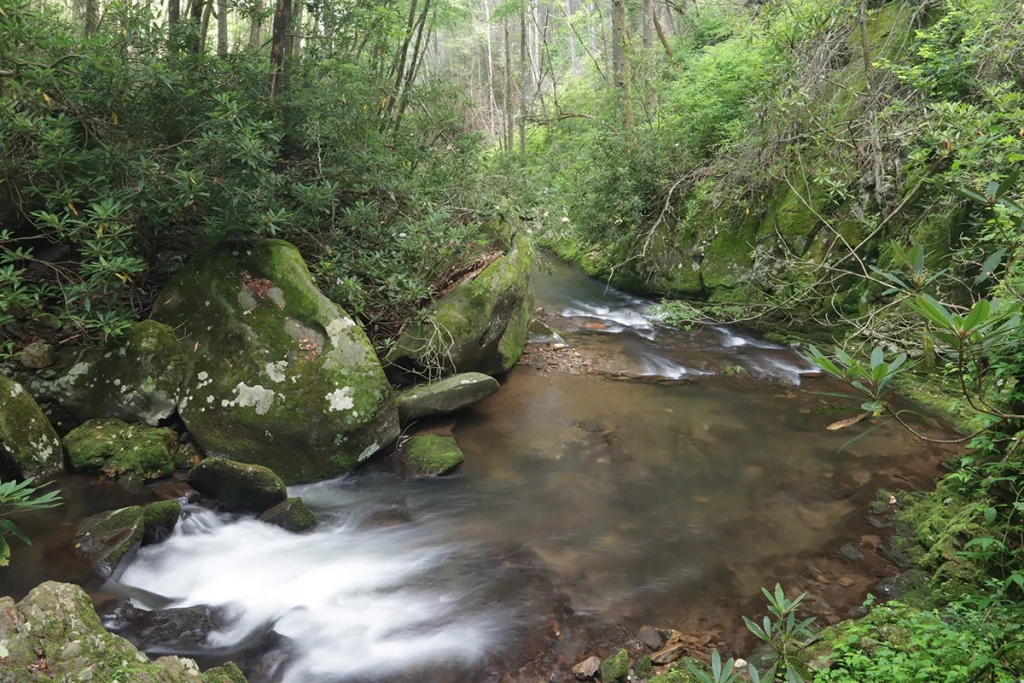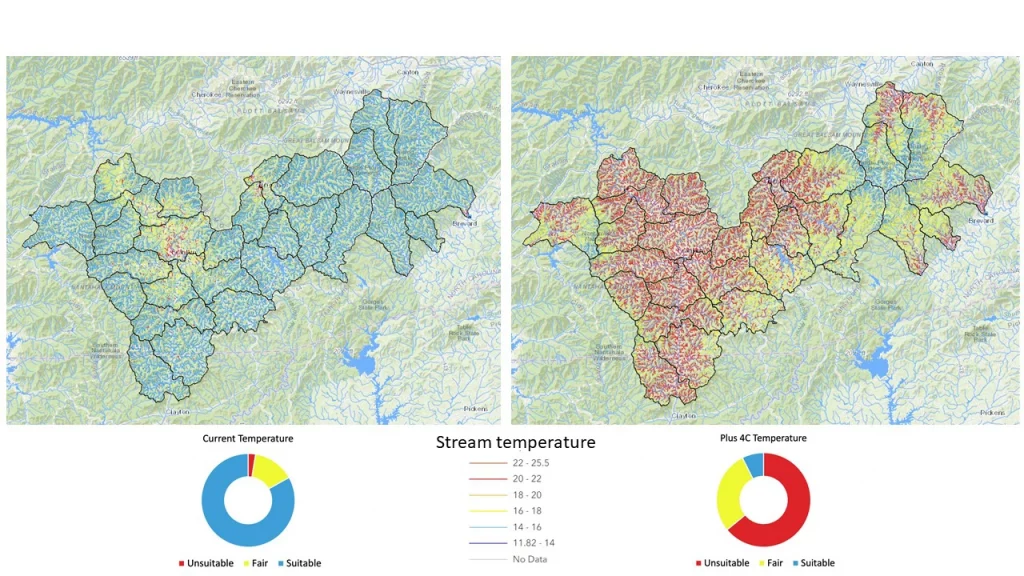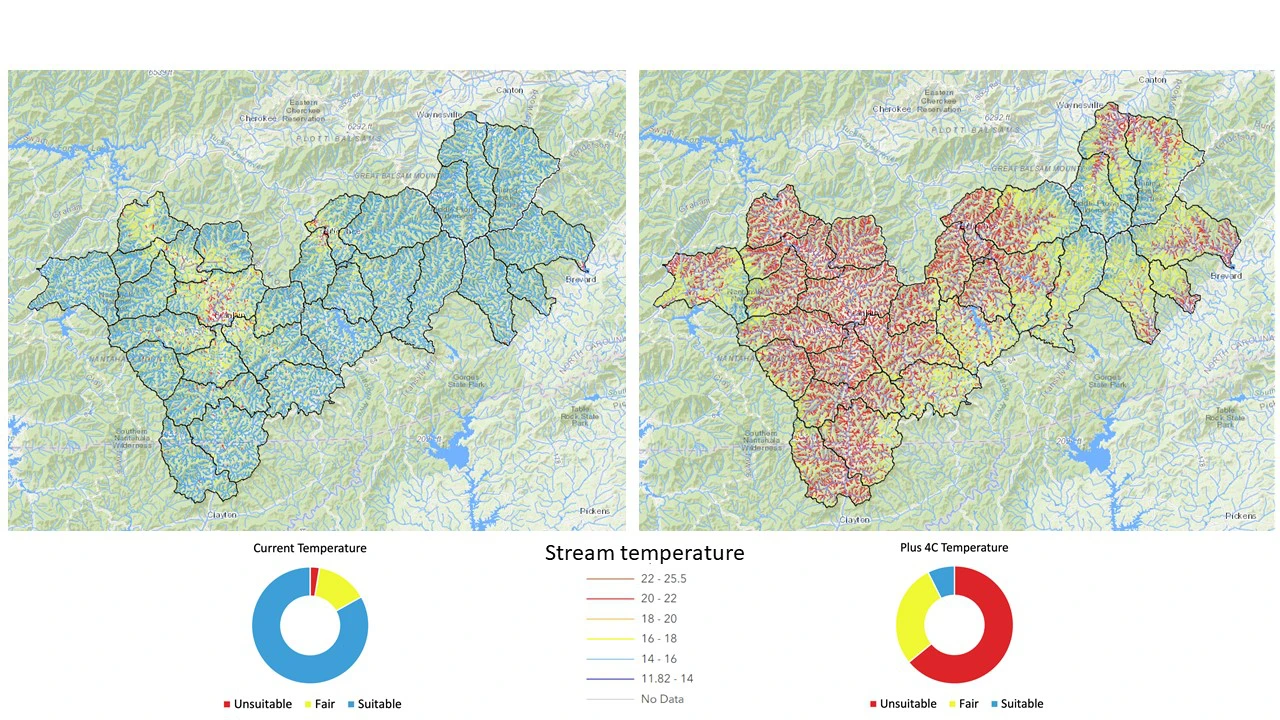This past summer a StoryMap visualizing results of a stream temperature model was published on the UGA River Basin Center website.
Emily Chalfin, a former RBC technician and current Odum graduate student in the Wenger lab, along with doctoral student Phillip Bumpers and Dr. Seth Wenger developed a model to predict temperatures across the Little Tennessee River.
Using data collected by UGA and TU volunteers we developed a statistical stream network model to predict temperatures in streams across the entire watershed upstream of the Lake Fontana inlet. We then forecasted changes in stream temperature based on different scenarios of increased air temperature (+ 0.5, 1.0, 2.0, 3.0, 4.0˚C) and determined changes in thermally suitable habitat for native brook trout (Salvilinus fontinalis).

Given our analysis, thermally ideal (<18°C) brook trout habitat is currently found in 3,836 miles of streams in our study area, but that will decrease by 23% if temperatures rise 1°C (2,974 miles) or 91% (341 miles) at 4°C. This project was a part of our NSF-funded stream warming study and included partnerships with Mainspring Conservation Trust and Trout Unlimited.

Learn more about the project on the RBC website.
Great work, Emily!


